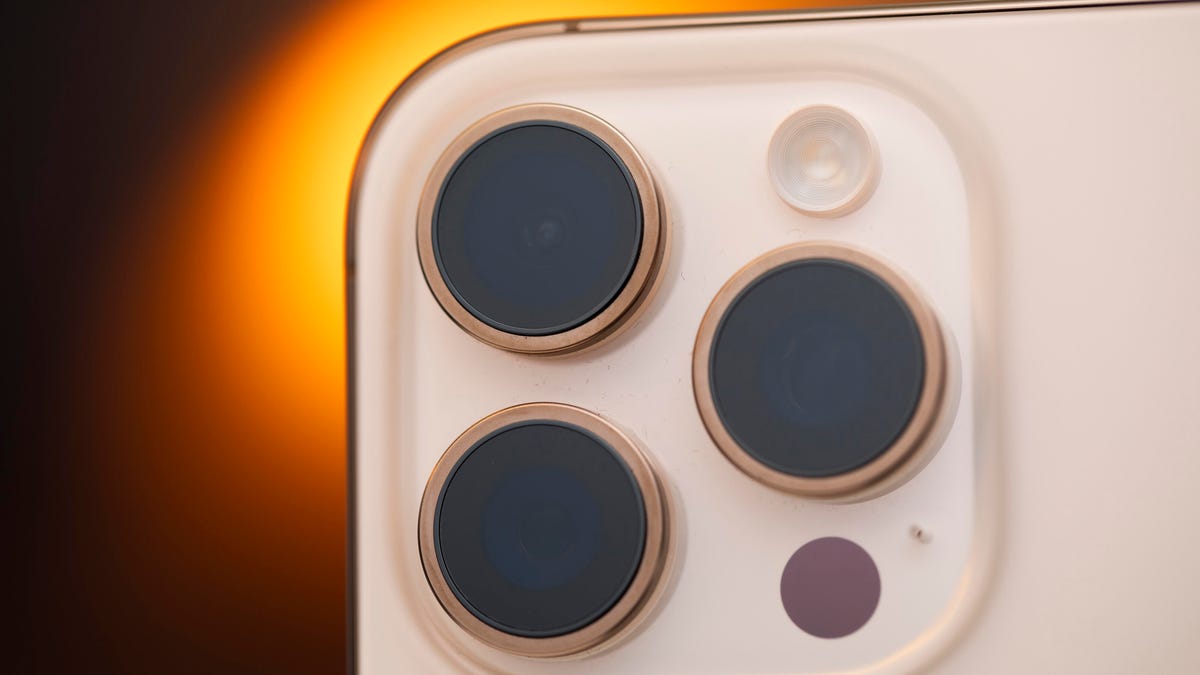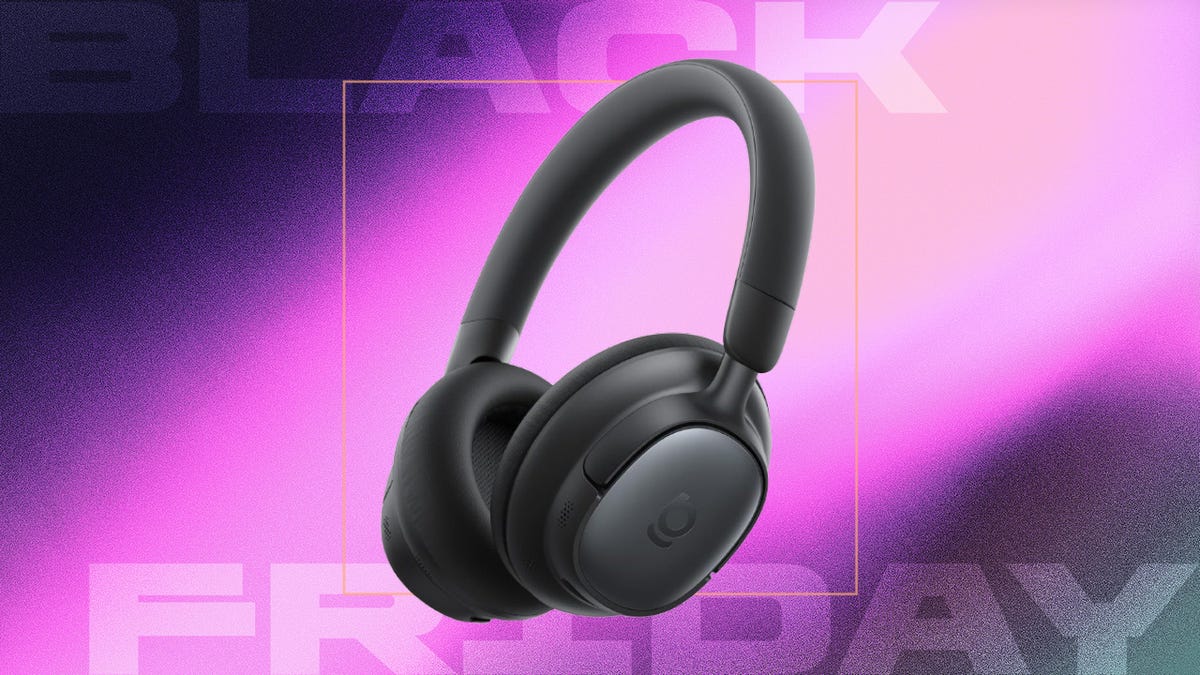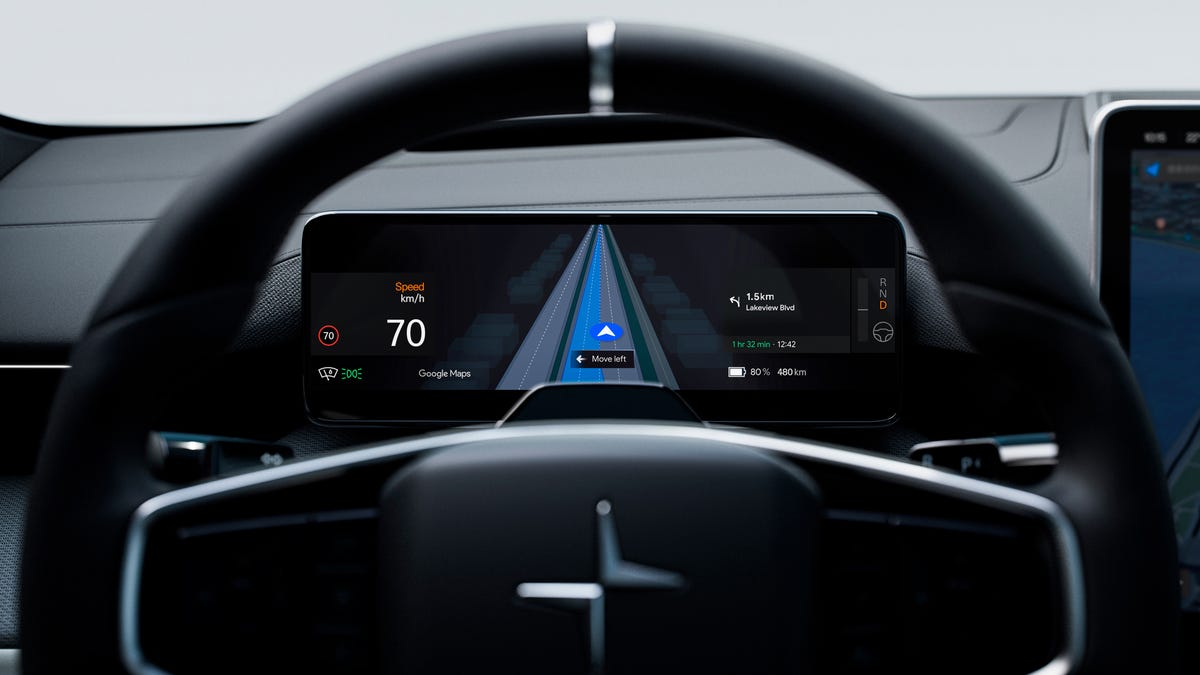Technologies
The iPhone 17 Needs Amazing Cameras. Here’s What I Think Apple Should Do
Commentary: Apple’s rivals are catching up when it comes to camera skills. Here’s how the iPhone 17 can pull ahead.

The iPhone 16 Pro already packs one of the best camera setups found on any phone, but the iPhone 17 needs to take things even further when it launches in just a few weeks. Sure, Apple’s phones are capable of taking stunning photos, thanks to its awesome software, ProRaw format and its wealth of video skills, but Apple’s rivals have been doing big things, too. The Galaxy S25 Ultra, the Pixel 9 Pro and the Xiaomi 14 Ultra all pack amazing camera setups that have given the iPhone 16 Pro a run for its money and made it clear that Apple isn’t the only company innovating in the imaging arena.
Read more: Camera Champions Face Off: iPhone 16 Pro vs. Galaxy S25 Ultra
While early reports from industry insiders claim that the phone’s video skills will get a boost, there’s more the iPhone 17 will need to make it an all-around photography powerhouse. As both an experienced phone reviewer and a professional photographer, I have exceptionally high expectations for top-end phone cameras. And, having used the iPhone 16 Pro since its launch, I have some thoughts on what needs to change.
Here are the main points I want to see improved on the iPhone 17 when it likely launches in September 2025.
An accessible Pro camera mode
At WWDC, Apple showed off the changes to the upcoming iOS 26 which included a radical change to the interface with Liquid Glass. But that simplified style extended to the camera app too, with Apple paring the interface down to the most basic functions of Photo, Video and zoom levels. Presumably, the idea is to make it super easy for even the most beginner of photographers to open the camera and start taking Instagram-worthy snaps.
And that’s fine, but what about those of us who buy the Pro models in order to take deeper advantage of features like exposure compensation, Photographic Styles and ProRaw formats? It’s not totally clear yet how these features can be accessed within the new camera interface, but they need to not be tucked away. Many photographers — myself very much included — want to use these tools as standard, using our powerful iPhones in much the same way we would a mirrorless camera from Canon or Sony.
That means relying on advanced settings to take control over the image-taking process to craft shots that go beyond simple snaps. If anything, Apple’s camera app has always been too simple, with even basic functions like white balance being unavailable. To see Apple take things to an even more simplistic level is concerning, and I want to see how the company will continue to make these phones usable for enthusiastic photographers.
Larger image sensor
Though the 1/1.28-inch sensor found on the iPhone 16 Pro’s main camera is already a good size — and marginally larger than the S24 Ultra’s 1/1.33-inch sensor — I want to see Apple go bigger. A larger image sensor can capture more light and offer better dynamic range. It’s why pro cameras tend to have at least «full frame» image sensors, while really high-end cameras, like the amazing Hasselblad 907X, have enormous «medium format» sensors for pristine image quality.
Xiaomi understands this, equipping its 15 Ultra and previous 14 Ultra with 1-inch type sensors. It’s larger than the sensors found on almost any other phone, which allowed the 15 Ultra to take stunning photos all over Europe, while the 14 Pro was heroic in capturing images at Taylor Swift concerts. I’m keen to see Apple at least match Xiaomi’s phone here with a similar 1-inch type sensor. Though if we’re talking pie-in-the-sky wishes, maybe the iPhone 17 could be the first smartphone with a full-frame image sensor. I won’t hold my breath on that one — the phone, and the lenses, would need to be immense to accommodate it, so it’d likely be more efficient just to let you make calls with your mirrorless camera.
Don’t lean on AI too much
AI has become a bigger part of the camera experience on many Android phones, from the Honor 400 Pro’s tool that brought my dad back to life to the Pixel 9 Pro’s wild generative AI functions. But iPhones have always emphasized the importance of real image quality, producing sharp, detailed images that remain faithful to the scene you actually saw when you pushed the shutter button.
Apple’s dalliances in AI so far haven’t exactly been groundbreaking and I worry that the company may want to be seen as making a bigger push for deeper, more ‘innovative’ uses for AI. And sure, maybe some of those could be useful in other parts of the phone, but the iPhone 17 cameras first and foremost still need to be able to deliver truly superb-looking images, not simply use AI to compensate for any hardware shortcomings.
Variable aperture
One of the other reasons the Xiaomi 14 Ultra phone rocks so hard for photography is its variable aperture on the main camera. Its widest aperture is f/1.6 — significantly wider than the f/1.78 of the iPhone 16 Pro.That wider aperture lets in a lot of light in dim conditions and more authentically achieves out-of-focus bokeh around a subject.
But Xiaomi’s 14 Ultra aperture can also close down to f/4, and with that narrower aperture, it’s able to create starbursts around points of light. I love achieving this effect in nighttime imagery with the phone. It makes the resulting images look much more like they’ve been taken with a professional camera and lens, while the same points of light on the iPhone just look like roundish blobs. Disappointingly, Xiaomi actually removed this feature from the new 15 Ultra so whether Apple sees value in implementing this kind of technology remains to be seen.
More Photographic Styles
Though Apple has had various styles and effects integrated into the iPhone’s cameras, the iPhone 16 range took it further, with more control over the effects and more toning options. It’s enough that former CNET Senior Editor Lisa Eadicicco even declared the Photographic Styles her «favorite new feature on Apple’s latest phone.»
I think they’re great, too. Or rather, they’re a great start. The different color tones, like the ones you get with the Amber and Gold styles, add some lovely warmth to scenes, and the Quiet effect adds a vintage filmic fade, but there’s still not a whole lot to choose from and the interface is slow to work through. I’d love to see Apple introduce more Photographic Styles with different color toning options, or even with tones that mimic vintage film stocks from Kodak or Fujifilm.
And sure, there are plenty of third-party apps like VSCO or Snapseed that let you play around with color filters all you want. But using Apple’s styles means you can take your images with the look already applied, and then change it afterward if you don’t like it — nothing is hard-baked into your image.
I was recently impressed with Samsung’s new tool for creating custom color filters based off the look of other images. I’d love to see Apple bring that level of image customization to the iPhone.
Better ProRaw integration with Photographic Styles
I do think Apple has slightly missed an opportunity with its Photographic Styles, though, in that you can use them only when taking images in HEIF (high-efficiency image format). Unfortunately, you can’t use them when shooting in ProRaw. I love Apple’s use of ProRaw on previous iPhones, as it takes advantage of all of the iPhone’s computational photography — including things like HDR image blending — but still outputs a DNG raw file for easier editing.
The DNG file typically also offers more latitude to brighten dark areas or tone down highlights in an image, making it extremely versatile. Previously, Apple’s color presets could be used when shooting in ProRaw, and I loved it. I frequently shot street-style photos using the high contrast black-and-white mode and then edited the raw file further.
Now using that same black-and-white look means only shooting images in HEIF format, eliminating the benefits of using Apple’s ProRaw. Oddly, while the older-style «Filters» are no longer available in the camera app when taking a raw image, you can still apply those filters to raw photos in the iPhone’s gallery app through the editing menu.
LUTs for ProRes video
And while we’re on the topic of color presets and filters, Apple needs to bring those to video, too. On the iPhone 15 Pro, Apple introduced the ability to shoot video in ProRes, which results in very low-contrast, almost gray-looking footage. The idea is that video editors will take this raw footage and then apply their edits on top, often applying contrast and color presets known as LUTs (look-up tables) that gives footage a particular look — think dark and blue for horror films or warm and light tones for a romantic drama vibe.
But Apple doesn’t offer any kind of LUT for editing ProRes video on the iPhone, beyond simply ramping up the contrast, which doesn’t really do the job properly. Sure, the point of ProRes is that you would take that footage off the iPhone, put it into software like Davinci Resolve, and then properly color grade the footage so it looks sleek and professional.
But that still leaves the files on your phone, and I’d love to be able to do more with them. My gallery is littered with ungraded video files that I’ll do very little with because they need color grading externally. I’d love to share them to Instagram, or with my family over WhatsApp, after transforming those files from drab and gray to beautifully colorful.
With the iPhone 17, or even with the iPhone 16 as a software update, I want to see Apple creating a range of its own LUTs that can be directly applied to ProRes video files on the iPhone. While we didn’t see this software functionality discussed as part of the company’s June WWDC keynote, that doesn’t mean it couldn’t be launched with the iPhone in September.
If Apple were able to implement all these changes — excluding, perhaps, the full-frame sensor which even I can admit is a touch ambitious — it would have an absolute beast of a camera on its hands.
Technologies
This New Car Feature Uses AI to Keep You From Missing Your Exit
Google Maps’ live lane guidance is being integrated into Polestar’s head-up display.
Technologies
Hurry to Nab the Baseus Bowie MH1 Headphones for Over Half Off With This Early Black Friday Deal
This deal drops the price of this premium pair to just $47, but this discount ends soon.

High-quality noise-canceling headphones can cost a pretty penny, especially if you are after adaptive ANC, all-day comfort, and a reliable battery life. Most options with all these features sit well over $100, but we just found a way to score a premium pair for less than $50.
Amazon has a solid early Black Friday deal on the Baseus Bowie MH1 headphones. You can get them for 20% off right now, which drops the price to $80. But stack that with the $25 on-page coupon and use the promo code 8JWTGEUN at checkout, and you slash another $33 off. That brings the final price down to just $47, which is a steal considering all the features you are going to enjoy.
The headphones come with cloud-soft protein leather earcups with resilient memory foam for cloud-like comfort. The pair is capable of blocking up to 99.8% of noise with –48 dB deep noise cancellation, and it adapts to your surroundings as needed.
Hey, did you know? CNET Deals texts are free, easy and save you money.
The 36mm drivers and full-range LCP diaphragms give you clear, rich sound no matter what you listen to. In addition, with Baseus Immersive Spatial Acoustics, the audio surrounds you for a more natural listening experience. For clearer calls, the headphones also pack 5-mic sound sensors with AI-powered voice enhancement and wind-noise reduction. You won’t have to repeat yourself constantly.
Battery-wise, you get up to 80 hours of playtime with ANC off, and 55 hours with it on. A quick 10-minute top-up can also get you up to an additional 10 hours of playback, which is great for when you’re out and about.
HEADPHONE DEALS OF THE WEEK
-
$200 (save $151)
-
$199 (save $150)
-
$329 (save $100)
-
$328 (save $72)
Why this deal matters
High-end audio gear doesn’t come cheap. This deal takes over 50% off a powerful pair of headphones, making the upgrade easy. It won’t last long, though, so it’s best to snap it up sooner rather than later.
Join Our Daily Deals Text Group!
Get hand-picked deals from CNET shopping experts straight to your phone.
By signing up, you confirm you are 16+ and agree to receive recurring marketing messages at the phone number provided. Consent is not a condition of purchase. Reply STOP to unsubscribe. Msg & data rates may apply. View our Privacy Policy and Terms of Use.
Technologies
Apple’s iPhone Pocket Is a $230 Gadget Mankini. We Tried It Out to Size It Up
The stretchy fabric satchel for your iPhone makes a fashion statement. CNET’s Bridget Carey wore it and waved it, and dubbed the iPhone Pocket «Apple’s Labubu.»

Remember iPod socks? Those brightly colored woolly wraps that swaddled your iPod like it was an infant? Apple sold them starting in 2004 for the better part of a decade. In things we did not have on our bingo card for 2025, Apple has decided now is the time to bring back the knitwear for the latest iPhones.
Meet the iPhone Pocket: a glorified yarn sling for your phone and whatever else you can cram in there without stretching the poor thing into oblivion. If we’re being catty, it does look a bit like a sweater you shrank in the wash and then tried to stretch out. Or maybe a mankini.
But hey, it could just be the zhuzh you’re looking for.
The iPhone Pocket is on sale now, but you can’t walk into just any old Apple Store and get it. Apple is selling it in 10 select shopping locales, like SoHo in New York, Regent Street in London, Marché Saint-Germain in Paris and Orchard Road in Singapore. Everyone else will just have to order it online like it’s from Temu.
High fashion does not come cheap. The short strap design will set you back $150, while the long strap version costs $230.
Don’t miss any of our unbiased tech content and lab-based reviews. Add CNET as a preferred Google source.
Getting our hands on an iPhone Pocket
On Friday, the first day the iPhone Pocket went on sale, CNET’s Bridget Carey picked up one each of the long and short versions (blue and pink, respectively) at the Apple Store in fashion-centric SoHo, the only Apple retail store selling it in the US. Customers there could go hands-on with the woven slings, giving the Pocket a stretch or sample slipping their iPhones into it.
The longer, crossbody model held Carey’s phone securely, and she felt confident wearing it around New York throughout the day. She also put it through some impromptu testing. «I’ve been swinging it around and stuffing other items in it,» she said. «I’ve even tied it around my neck as a scarf and put it on my foot as a sock.»
So far, the Pocket has kept its shape. The material has some spring to it, and Carey thinks she could take it on errands with her kids and not have to worry. But it’s not tough enough for the washing machine. Instructions inside say the Pocket is to be hand washed and should not go in the dryer.
One of Apple’s suggestions for accessorizing with the iPhone Pocket, if you’re not doing crossbody, is to tie it onto the bag you’re carrying. That was not Carey’s first inclination. «I’m not sure I would feel comfortable hanging my phone like a keychain on my bag,» she said. «But I still wanted to get a short Pocket because, well, I wanted to have a bit of fashion history. And I love pink.»
If she does go the bag-Pocket route, Carey said, «I’ll hook my Labubu off it, too. After all, this is Apple’s Labubu now, a hard-to-find fashion accessory that hangs on your bag.»
The fashion sense of the iPhone Pocket
Apple designed the iPhone Pocket in collaboration with fashion brand Issey Miyake, the designer behind the endless supply of black turtlenecks worn by Steve Jobs (and an Apple employee uniform that almost happened).
I’m no fashion expert, but fashion writer Tiffany Lo is, and she told me «the design embodies Issey Miyake’s signature pleat pattern and the idea of crafting it from a single piece of fabric. It’s instantly recognizable.»
The iPhone Pocket is a stretchy 3D-knitted pouch with ribbed textures that hugs your iPhone. It’s see-through when you tug at it, so you can glimpse your lockscreen. But Apple wants you to put more than your iPhone in this accessory. You’re encouraged to slip in AirPods, lip balm, a key fob, breath mints or any other pocketable item. The shorter iPhone Pocket is more like a wristlet bag, while the longer one turns your iPhone into a crossbody accessory.
The wearable tech pouch is certainly a fashion statement if you decide to drape it across your torso, perhaps like a sash of questionable decisions. Whether you carry it in-hand, tie it to your bag, or sling it on like a fashion-forward postman, you will definitely get some looks, perhaps confused ones. The short strap version comes in eight colors: lemon, mandarin, purple, pink, peacock, sapphire, cinnamon and black. The long strap comes only in those latter three colors.
So who is the iPhone Pocket for? Lo says it «could appeal to younger generations thanks to the design that allows users to wear it as a crossbody.» Given that Apple released crossbody straps for all its iPhones earlier this year, maybe it has some insights into what Gen Z really wants. Is it worth the $230, or even $150? Yes or no, it’s a far cry from the $29 the iPod socks went for back in the day.
-

 Technologies3 года ago
Technologies3 года agoTech Companies Need to Be Held Accountable for Security, Experts Say
-

 Technologies3 года ago
Technologies3 года agoBest Handheld Game Console in 2023
-

 Technologies3 года ago
Technologies3 года agoTighten Up Your VR Game With the Best Head Straps for Quest 2
-

 Technologies4 года ago
Technologies4 года agoBlack Friday 2021: The best deals on TVs, headphones, kitchenware, and more
-

 Technologies4 года ago
Technologies4 года agoVerum, Wickr and Threema: next generation secured messengers
-

 Technologies4 года ago
Technologies4 года agoGoogle to require vaccinations as Silicon Valley rethinks return-to-office policies
-

 Technologies4 года ago
Technologies4 года agoOlivia Harlan Dekker for Verum Messenger
-

 Technologies4 года ago
Technologies4 года agoiPhone 13 event: How to watch Apple’s big announcement tomorrow

